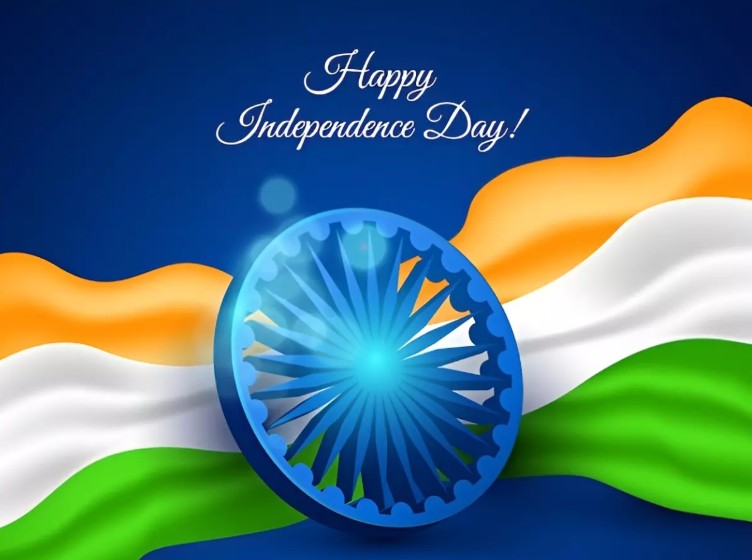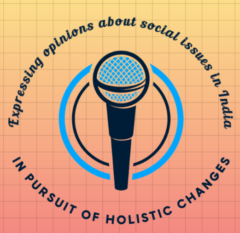
As India celebrates its 79th Independence Day in 2025, the theme “Naya Bharat” resonates deeply with every citizen. Indeed, this theme captures the government’s bold vision of a prosperous, safe, and self-reliant India by 2047, aligning perfectly with the “Viksit Bharat” dream. Moreover, the past year has been a defining chapter in this journey, marked by both inspiring achievements and formidable global challenges. From landmark military operations to complex trade tensions, India’s pursuit of progress pushes forward—reminding us that freedom is not a destination, but a constant evolution. On this Independence Day, therefore, the “festival of 140 crore resolutions,” as Prime Minister Modi calls it, we pause to reflect on the progress, the setbacks, and the vital path forward for our great nation.
The Theme of Independence Day 2025: Naya Bharat and Vision 2047
“Naya Bharat” embodies much more than a catchphrase; indeed, it is a powerful call for transformation. It envisions an India that breaks old shackles and charts a future where economic growth, social equity, technological advancement, and sustainability coexist harmoniously. Furthermore, the government’s goal is ambitious—to build a nation ready to stand tall on the global stage by 2047, the centenary of independence.
This vision stresses inclusivity—not only in GDP growth but also in empowering women, youths, and marginalized communities. Additionally, it is about reducing dependence on foreign powers through “Aatmanirbhar Bharat” initiatives, fostering indigenous industries, and advancing scientific innovation. Consequently, the theme inspires everyone to contribute actively to nation-building, emphasizing that India’s independence is not just inherited but must be earned anew every day.
Prime Minister Narendra Modi’s address poignantly reflects this spirit: “This great festival of freedom is a festival of 140 crore resolutions, a festival of hope and aspiration.” Hence, such words challenge us all to rise beyond ceremony and embrace responsibility, unity, and resilience in the Naya Bharat era.
Major Milestones: Operation Sindoor and Democratic Resilience
Operation Sindoor: Protecting Sovereignty with Precision
In May 2025, India launched Operation Sindoor—a decisive counter-terror operation following a heinous attack in Pahalgam. This military strike targeted terrorist camps in Pakistan-occupied Kashmir, thereby neutralizing strategic threats while exercising remarkable restraint to avoid escalation. The use of advanced Rafale jets and precision-guided missiles showcased India’s military modernization; moreover, effective air defense thwarted retaliatory strikes. Undoubtedly, Operation Sindoor is a benchmark of strength and resolve, symbolizing India’s unwavering commitment to protect its citizens and sovereignty.
Democracy in Action: Elections and Electoral Reforms
The year, following Independence Day 2024, witnessed increased voter turnout and renewed focus on transparency, notably after the Supreme Court struck down the opaque electoral bonds scheme. Consequently, these electoral reforms signal a growing demand for cleaner politics. Despite facing economic pressures and rising inequality, India maintained steady GDP growth of around 6.5%, showing resilience in challenging times. Therefore, these milestones reflect a democratic vibrancy that is deeply intertwined with the nation’s progress, reminding us that freedom requires constant nurturing, vigilance, and reform.
Challenges: The Trump Tariff War and Social Divides
The Tariff Turbulence
India’s economic strides faced a significant hurdle last year with the onset of the tariff war initiated by US President Donald Trump. The US levied an additional 25% tariff on Indian exports, which escalated to a crippling 50% on certain goods by August 2025. This trade retaliation was purportedly linked to India’s continued purchase of Russian oil amid geopolitical tensions.
These tariffs pose formidable challenges for India in securing its place in global markets. They risk slowing India’s export-driven sectors, affecting small and medium enterprises, and denting overall GDP growth by 0.2 to 0.4 percentage points. Nevertheless, India’s response has been pragmatic, focusing on diversifying markets and boosting domestic demand—traits that align with the Naya Bharat vision.
Internal Social Strains
Alongside external economic issues, India grapples with internal social challenges. Rising inequalities, regional conflicts, and political polarization threaten the harmony essential for progress. For instance, incidents of violence, especially in the Northeast, and ongoing debates on electoral integrity and wealth disparity remind us that India’s path forward must include deep social reforms and inclusive growth.
India’s 2024-2025 Highlights and Challenges
| Achievement/Challenge | Summary & Impact |
|---|---|
| Operation Sindoor | Strategic counter-terror strike, restored security |
| GDP Growth Rate | 6.5%, resilient amid global trade tensions |
| US Tariff on Indian Exports | 50%; highest in decades, challenges exports |
| Electoral Bond Scheme Scrapped | Political funding transparency enhanced |
| Income Inequality | Top 1% control 22.6% of income |
| Regional Conflicts (Manipur) | Ongoing unrest and rehabilitation |
| Patriotism through Digital Engagement | Record participation in “Har Ghar Tiranga” |
| Energy Transition | Renewed focus on sustainable, green projects |
(Source: Economic Times, PIB, News Reel Asia, Drishti IAS)
The Roadblocks: Tariffs, Trust, and Tumult
India’s challenge is to move from symbolic victories to systemic change. Indeed, the Trump tariffs are more than a headline—they remind us of the fragility of global alliances in an age of transactional politics. The sudden escalation forced both policymakers and private businesses to accelerate the search for alternative supply chains and rethink reliance on US markets. Meanwhile, internal fractures—from communal violence in Manipur to the rising wealth divide—underscore the vital need to address unity and equity as the foundations of India’s future.
Moreover, despite initial concerns, experts like S&P Global Ratings believe the tariffs will not significantly affect India’s economic growth. This is because exports to the US make up only about 2% of India’s GDP, and key sectors such as pharmaceuticals remain largely unaffected. India maintains steady growth projections near 6.5%. However, the tariffs have sparked calls to boycott American goods and boosted the push for “Make in India.” While the short-term economic impact may be limited, the tariffs still pose challenges for trade relations and require careful management.
Looking Ahead: Vision, Opportunity, and the Risks Ahead
Prospects for Progress
The past year’s jolts have galvanized India’s innovation ecosystem, defense modernization, and commitment to digital governance. Furthermore, robust participation in social campaigns such as “Har Ghar Tiranga” and ongoing efforts toward green energy showcase a society ready to embrace the future. Initiatives to bridge the digital divide, champion women’s labor participation, and foster indigenous defense technology underline the intent to make growth inclusive.
Challenges to Overcome
Yet, every leap forward faces its own gravity. Political polarization, skepticism about institutional reforms, and slow progress on social justice require political will and collective action. As geopolitical rivalries intensify and protectionism gains ground, India’s resilience will depend on its ability to build alliances, both within and beyond its borders.
The Spirit of Celebration: Independence Day 2025 Festivities
The 79th Independence Day was celebrated with traditional grandeur and renewed national pride across India. The Prime Minister hoisted the national flag at Delhi’s historic Red Fort, accompanied by the ceremonial 21-gun salute, singing of the national anthem, and a breathtaking display of military prowess with parades showcasing the might and diversity of India’s armed forces. Highlighting this year’s celebrations was the invitation to 50 of Delhi’s best-performing sanitation workers as special guests—a powerful reminder of the unsung heroes who contribute to the nation’s cleanliness and dignity.
Additionally, cultural programs across schools, colleges, and public institutions nationwide brought together patriotic songs, dances, drama competitions, and street performances celebrating India’s diverse heritage. Community initiatives were vibrant with tree plantations, cleanliness drives, and heritage walks, aligning perfectly with the “Naya Bharat” focus on sustainability and social harmony. This wide-ranging program illustrates how Independence Day remains a potent catalyst for national unity, education, and civic engagement.
Empowering Youth and Communities – Independence Day Engagements
| Aspect | 2025 Data & Initiatives |
|---|---|
| Students in National Patriotic Events | 22.4 lakh students, 1.2 lakh schools |
| Digital Campaign Reach | 9.38 crore citizens in ‘Har Ghar Tiranga’ |
| Honoring Everyday Heroes | Sanitation, healthcare, educators honored |
| Community Activities | Tree planting, cleanliness drives, heritage walks |
(Source: PIB, Ommcom News, MyGov India)
Inspiring Youth: Cementing Patriotism in Action
With nearly 40% of India’s population under the age of 30, the youth stand as the vital torchbearers of Naya Bharat. This Independence Day, millions engaged with patriotic fervor across both digital and physical platforms, rekindling a sense of unity and pride. Whether through flag-hosting events, participation in “Har Ghar Tiranga,” or volunteering for community service, young Indians are increasingly embracing their responsibility in shaping the nation’s future trajectory.
Yet, patriotism must evolve beyond symbolism to sustained nation-building efforts. The key lies in cultivating quality education, entrepreneurship, and active civic participation among youth. As APJ Abdul Kalam famously said, “Freedom is nothing without responsibility.” When young citizens internalize this, their energy and innovation can accelerate India’s progress toward a more inclusive, resilient, and dynamic society.
Renewed Resolve for India’s Future
Independence Day 2025 encapsulates a story of remarkable progress tempered by significant challenges. From Operation Sindoor’s reminder of strategic vigilance to the uncomfortable realities of tariff wars and domestic inequality, India faces a complex destiny.
For the government and citizens alike, the road ahead demands transparency, skill development, social inclusivity, and diplomatic agility. Most importantly, it demands that every Indian embrace the spirit of Naya Bharat—not as a slogan, but as a lived, collective commitment.
Therefore, let us honor the sacrifices of our forebears by making Independence Day 2025 a milestone of real progress and shared prosperity, forging a resilient and vibrant India for generations to come.
This Independence Day 2025, join the journey—contribute to the India you dream of. Let patriotism be active, inclusive, and forward-looking.
#IndependenceDay2025 #NayaBharat #ViksitBharat #IndiaProgress #YouthForIndia

Good!
For quite some time we have been hearing empty slogans like: ache din, athma nirbar, betti bachavo; bieti padavo, naya Bharat, Vikshit Bharat, Make in India, Har Ghar Thiranga and so on.
On the ground had anything been achieved.
India makes around ten wealth creators at the cost of ordinary man.
Still the lower class has no two square meals per day.
Their health is abysmally poor.
Govt schools in the rural areas are mere cattle sheds with no teachers, no equipment etc.
There is no place in the globe where our PM has not visited.
Forgetting diplomacy and statesmanship the PM blatantly canvassed for Trump.
Now the same trump back stabs us by tariffs.
There is a lot to do with the education when you are a PM or President of a country.
Our PM shouts from the roof top his poor knowledge of science and policies in public and in private (orchestrated interviews)
India will be emancipated (independent) only when our lowest class are free from superstitions, empowered by basic education and health care.
Our PM had the audacity to use the Independence Day message to praise RSS and calling it an NGO who have taken part in nation building (sic).
Did they have any role at all in the independence movement. Instead, they (Savarkar) colluded with the British in driving a wedge between Hindus and Muslims by writing at least six apology letters to free him from prison.
After coming out he worked with the British in their ‘divide and rule’ policy.
The greatest harm that the BJP has done in its 11-year rule to mix religion and politics for their personal vote bank, while all the time ignoring and criticising the yeoman service rendered by Nehru, sardar Patel, Ambedkar, Subhash Chandra Bose, Indira Gandhi, Rajiv Gandhi. Manmohan Sigh and others.
What an irony is it that in their Independence Day Picture message published, Savarkar who had no role in getting Independence is Placed above Gandhi who gave his own life for independence.
Which true Indian will tolerate this?